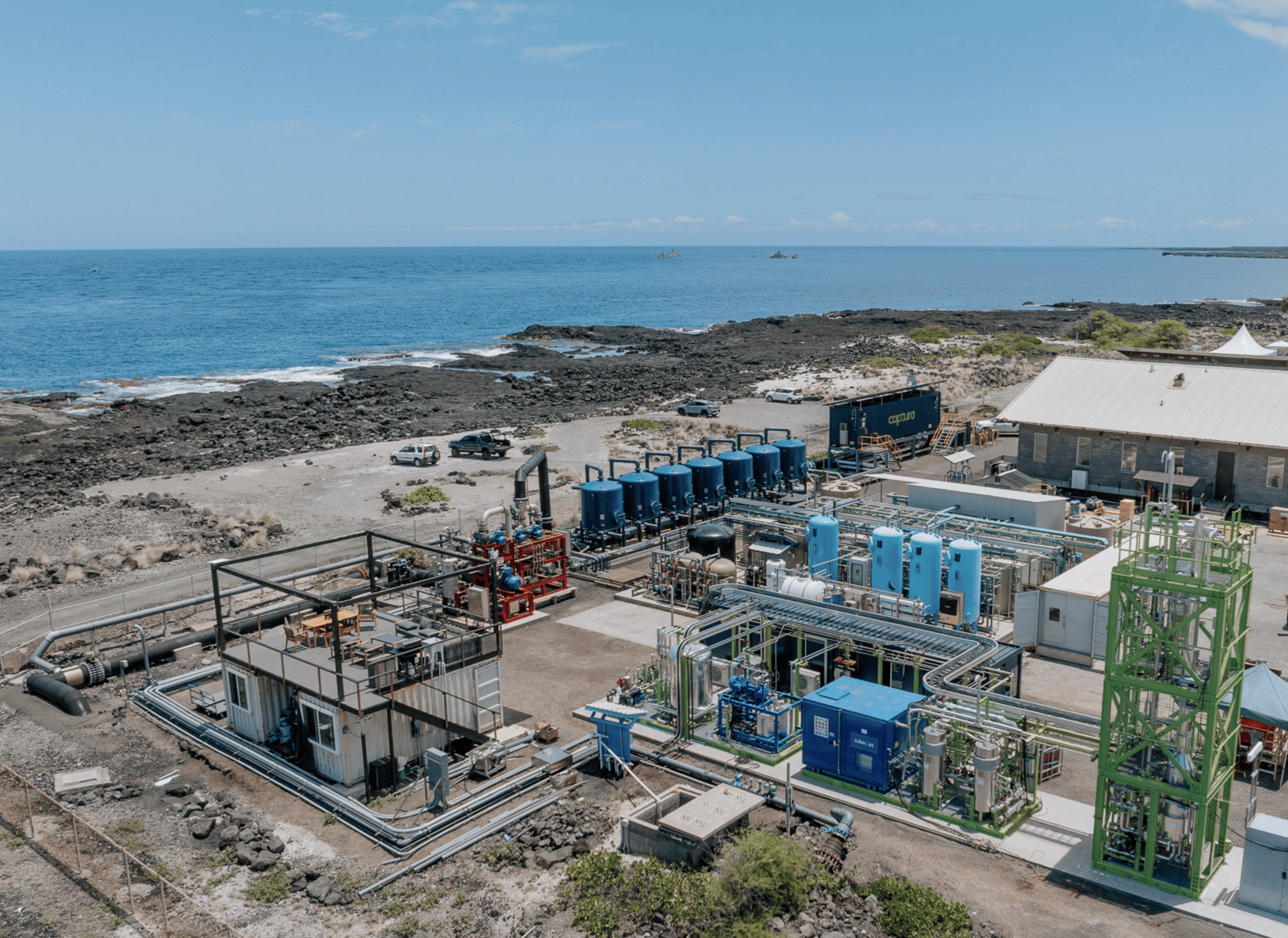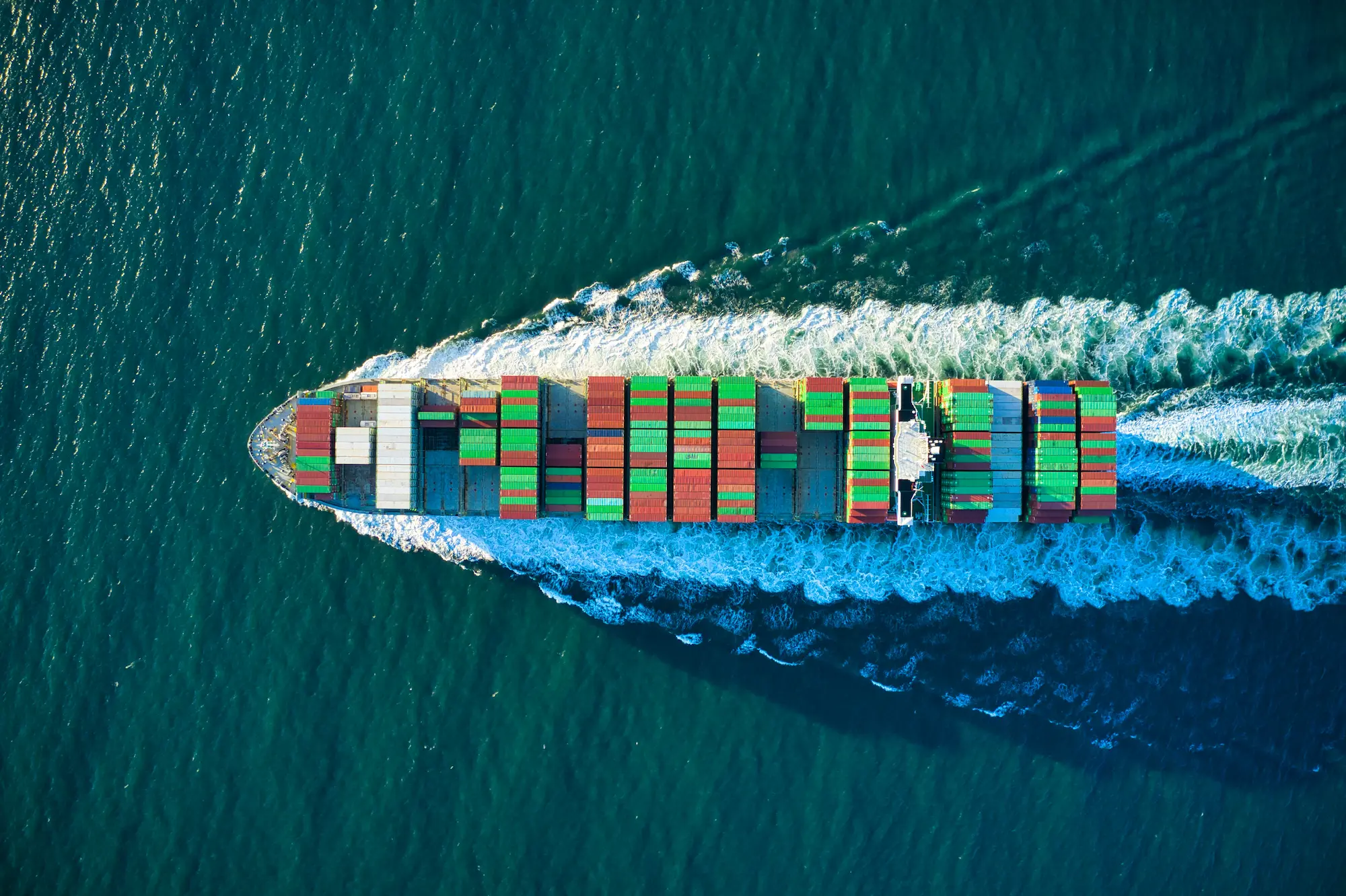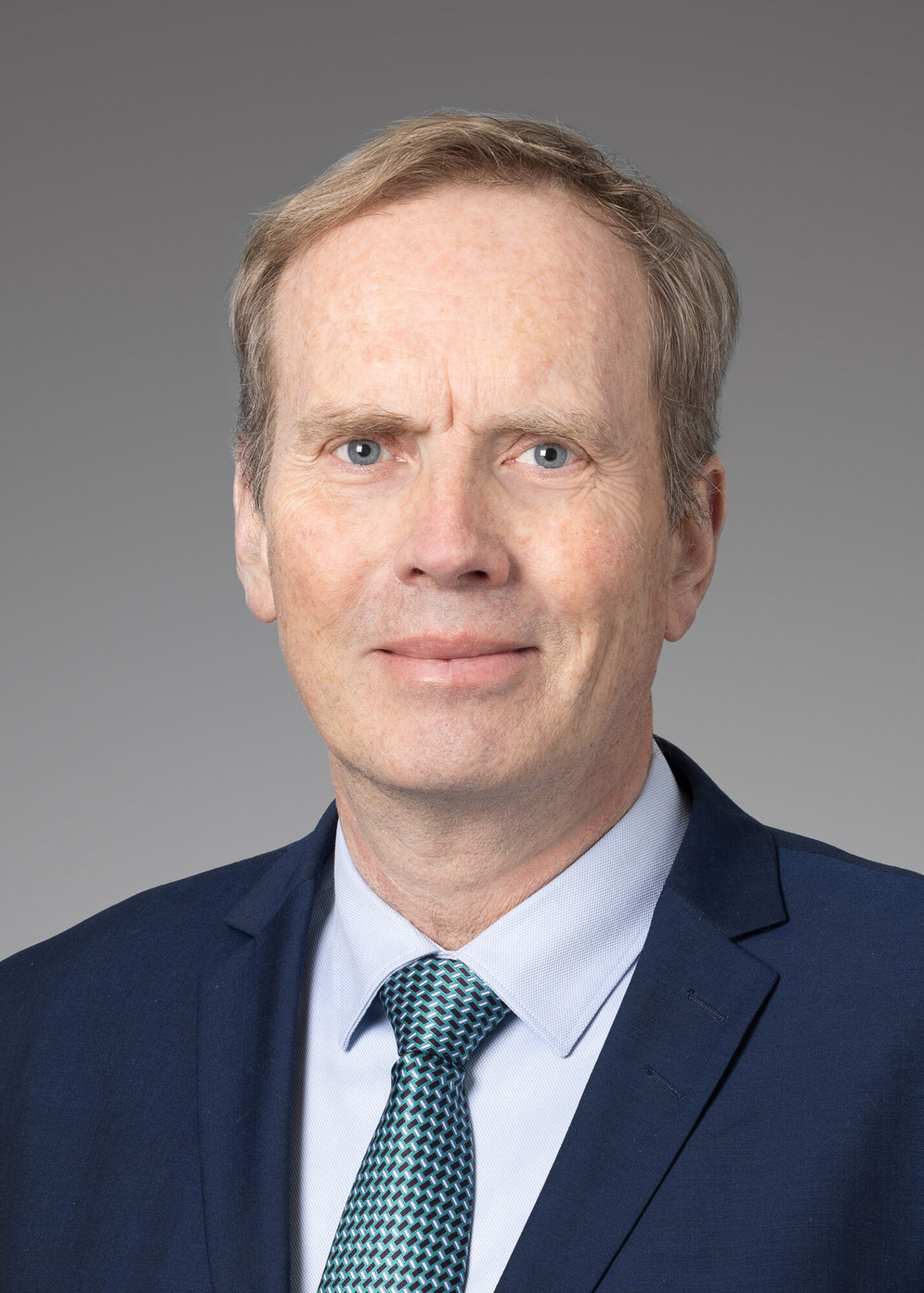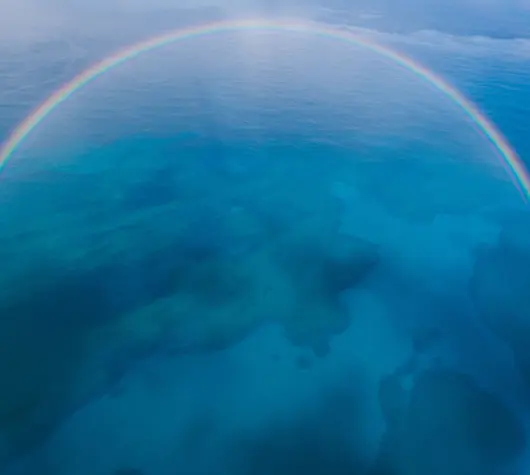Author: Tara Bojdak
This post can be found by following the link below:
This post can be found by following the link below:
This post can be found by following the link below:
This post can be found by following the link below:
PASADENA, Calif., November 12, 2025 – In a major step toward the commercialization of Direct Ocean Capture (DOC) technology, Equinor and Captura have successfully completed a joint technology qualification program, validating Captura’s DOC system for commercial deployment.
DOC is an engineered carbon removal solution that extracts carbon dioxide (CO₂) from seawater for permanent CO₂ storage or re-use. Captura’s DOC technology combines high-performing electrodialysis with the ocean’s natural ability to absorb atmospheric CO₂, providing a scalable and complementary approach to existing carbon management solutions.
Over the past two years, Equinor and Captura have collaborated closely to advance this promising solution. Together, Equinor’s technical experts and Captura’s engineering and operations teams focused on evaluating the system’s design, operational stability, and performance during sustained operations.
This effort culminated in a rigorous, year-long qualification program at a joint 1,000-ton-per-year pilot facility in Kona, Hawaii. The program tested the system against 20 critical performance metrics, including safety, operational reliability, CO₂ removal efficiency, and monitoring, reporting, and verification (MRV) to ensure the technology meets the highest standards for commercial deployment.

“This collaborative effort has not only de-risked the technology but also demonstrated its scalability through established test plans and milestones” said Lionel Ribeiro, Carbon Removal Manager at Equinor. “Captura’s ability to attract a diverse coalition of strategic partners further underscores the scaling potential.”
Captura is now assessing potential sites for its first commercial-scale DOC project. Design is already underway for a facility that captures between 30,000 and 50,000 tons of CO₂ annually, with multiple high-graded locations under consideration in Europe, the UK, and Asia-Pacific.
“This milestone with Equinor is a critical step in bringing direct ocean capture to market,” said Steve Oldham, CEO of Captura. “Equinor’s deep expertise as a global energy leader brought the rigor and critical perspective needed to validate our technology against the demanding standards required for large-scale deployment. We greatly value their partnership throughout this process and as we continue to prepare for commercial roll-out.”
###
“We recognized early that carbon removal is a critical part of achieving net zero, not a last resort. For it to scale at the pace required, we believe it’s important to engage early and help accelerate promising technologies.”
Scaling carbon removal to meet the climate challenge requires more than innovation—it requires deep cross-industry collaboration. At Captura, we’re building partnerships with organizations that share our vision and bring the complementary expertise needed to make progress happen.
One of those partners is Mitsui O.S.K. Lines (MOL), a global leader in shipping and logistics. MOL was the first company to sign a large-volume offtake agreement for Captura’s Direct Ocean Capture (DOC) technology, purchasing 30,000 t-CO2e carbon removal credits. The company also invested in Captura through its venture arm, MOL Switch, and entered a strategic partnership to explore deployment of commercial DOC plants.
We recently caught up with Yoshikazu Hirose, General Manager of Carbon Removal Team at MOL, to discuss why the company views DOC as a promising pathway for carbon removal and how it fits within MOL’s broader decarbonization vision. Here’s what he shared with us.
———
What are some of the biggest challenges the shipping industry faces in meeting its climate and decarbonization targets today?
Shipping is the most carbon-efficient way to move goods, with far fewer emissions per ton-mile than trucks or planes. But because more than 80% of global trade travels by sea, the sector still accounts for about 2–3% of global greenhouse gas emissions.
So, decarbonizing the sector is a major task, and it is uniquely challenging for a number of reasons. For one, it’s a capital-intensive business built on long-lived vessels, which means fleets can’t be replaced overnight. Operations span the globe, so securing reliable fuel supply, infrastructure and regulation everywhere is complex. Also, many low-carbon fuel pathways are still in their infancy, with availability, safety standards, costs and policy alignment still developing.
MOL has made significant commitments to decarbonize, with a net-zero emissions target for 2050 and a robust roadmap to get there. What are some of the key strategies you’re pursuing to reach those goals?
At MOL, our approach to decarbonization is multi-layered. First, we are pushing hard on efficiency through improved hull designs, clean energy adoption, wind assist technologies and operational improvements. Second, we must shift to cleaner fuel. MOL is exploring alternative fuels like e-methane, e-methanol, ammonia, hydrogen, biofuels, and hybrid or dual-fuel systems. Third, because some emissions remain unavoidable, we need to deploy carbon removal to address residual emissions. That is why we see engineered removal technologies like DOC as a necessary complement to emissions reductions.
That’s why we’ve partnered with innovative carbon removal companies like Captura and joined initiatives like the Japanese CDR Coalition, which brings together companies committed to scaling credible removal solutions. By combining innovation, collaboration, and measurable progress, we believe we can reach our 2050 target and help lead the maritime industry toward a net-zero future.


You were the first company to sign a major offtake agreement for Captura’s DOC carbon removal — what gave you the confidence to move first and at this scale?
We recognized early that carbon removal is a critical part of achieving net zero, not a last resort. For it to scale at the pace required, we believe it’s important to engage early and help accelerate promising technologies. When evaluating Captura’s technology, we saw a technically robust and highly scalable solution that builds on the ocean’s natural carbon cycle—something that resonates strongly with our maritime expertise. We were also impressed by the rigorous validation and scale-up demonstrated through Captura’s pilot program. Together, these factors gave us the confidence to move first and form a partnership that supports both our decarbonization goals and the broader advancement of DOC carbon removal.
In addition to the offtake, MOL has also invested in Captura and signed an MOU to explore deploying DOC plants. How does this technology align with MOL’s broader business, and how does it complement other decarbonization approaches in shipping?
Captura’s DOC technology is a natural fit within our decarbonization strategy. It’s a flexible solution that can deliver both carbon removal and e-fuel production by combining high-purity captured CO₂ with clean hydrogen, potentially supporting multiple decarbonization pathways in our net zero roadmap.
We also see strong synergies with our shipping operations. For example, there’s potential to repurpose end-of-life large vessels as floating DOC platforms, creating new value from declining assets while advancing our 2050 net-zero goals. It’s an approach that fits squarely with our long-term commitment to innovation and sustainability.
From your perspective, what makes DOC a particularly compelling carbon removal solution?
We see DOC as a scientifically robust and scalable approach to carbon removal. It leverages the ocean’s vast, natural capacity to absorb carbon without introducing new materials or chemical additives, making it both efficient and environmentally responsible. The technology can also integrate into the broader carbon capture, utilization, and storage (CCUS) ecosystem, creating opportunities for shared logistics, infrastructure, and synthetic fuel production. For a global maritime company like MOL, that compatibility across value chains is especially valuable.
This post can be found by following the link below:
This post can be found by following the link below:
Industry leader brings extensive experience in infrastructure and energy transformation
PASADENA, Calif., September 4, 2025 – Captura, a leader in Direct Ocean Capture technology for carbon dioxide removal, today announced the appointment of Johan Pfeiffer to its Board of Directors.
“We are delighted to welcome Johan to Captura’s board at such a pivotal moment in our growth,” said Bernard David, Board Chair of Captura. “His appointment expands the depth and capability of our board, bringing highly relevant expertise in infrastructure investment, energy services, and global operations. With Series B fundraising underway and commercialization on the horizon, Johan’s experience will be invaluable in helping to guide our strategy and accelerate our progress.”
Johan Pfeiffer brings more than 30 years of global infrastructure and energy experience to Captura’s board. He currently serves as managing director and lead operating partner at Morgan Stanley Infrastructure Partners, an investment platform with approximately $17 billion in assets under management since inception, where he oversees the value creation of the portfolio companies as well as serving on several boards.
Pfeiffer’s extensive background includes senior leadership positions at Johnson Controls, where he served as president for Europe, Latin America, and the Middle East, and more than 20 years at FMC Technologies, where he held various global general management roles and helped transform the company into a leader in the oil and gas services and equipment sector. Earlier in his career, Pfeiffer held positions at Boston Consulting Group and Dow Inc.

“From my first introduction to Captura, I was struck by both the strength of its technology and the credibility of its world-class team and partners,” said Pfeiffer. “Having worked across global energy and infrastructure markets for decades, I see tremendous potential for this approach to make a material impact on the climate and energy challenge.
“I look forward to working alongside the board and leadership team to help accelerate commercialization and global deployment of the technology and the solution.”
Pfeiffer has also served on the boards of Hoegh Evi, Eureka Midstream, the Awty International School, and the Petroleum Equipment & Services Association.
Captura’s Direct Ocean Capture technology leverages the ocean’s natural carbon removal capabilities to extract CO₂ from seawater, creating capacity for the ocean to absorb more CO₂ from the atmosphere. The company’s process is designed to be highly scalable and cost-effective while creating minimal impact on ocean ecosystems.
###
